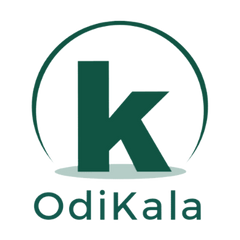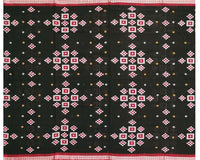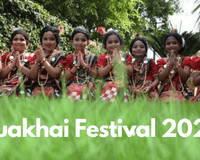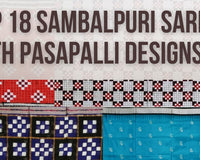
HISTORY:-
Koraput (Odia: କୋରାପୁଟ ଜିଲ୍ଲା) is a district of Odisha, India, and known for rich and diverse types of mineral deposits. It is located along the Eastern Ghats.
Koraput district was ruled by several dynasties such as Satavahanas, Ikshvakus, Nalas, Ganga kings and kings of Surya vans. In ancient times when the Nalas ruled this tract with Pushkari near modern Umarkote was their capital city. In the medieval period, Nandapur developed as the capital under the Silavamsi kings and after them under the kings of the solar dynasty.[2]Viravikrama Deo of the solar dynasty shifted his capital to Jeypore about the middle of the 17th century and developed into a prospered town.
Koraput came under the French possession in 1753 A.D. At that time the French General was Bussy, who obtained it from Nizam. Anand Raju, the Raja of Vijayanagar invited the English to expel the French from the Sarkar. On 1st Dec 1758 A.D., at Rajahmundry, a decisive battle took place where the French were defeated. The Raja of Jeypore Ramachandra Deo (1781-1825 A.D.)was granted a permanent Sanand by the British. With the march of time, Jeypore Estate was administered directly by the British under the Act XXVI of 1839.[
It was a part of the erstwhile Madras Presidency and became a district of Odisha state on 1 April 1936. In October 1992, erstwhile Koraput district was divided, resulting in the creation of Malkangiri, Rayagada and Nabarangpur district along with present Koraput district.
It is currently a part of the Red Corridor.
CULTURE AND TRADITION:-
PARAB is the mother of all district festivals. Every year PARAB is expanding its arm large. Koraput region, being the mosaic of tribal life and culture and heritage of the Country, specific emphasis is being given to highlight the cultural heritage through PARAB, the Annual Festival of Koraput District and to establish it as National Festival of indigenous people and festival of tribals aiming to attract large number of tourists both domestic and foreign. With the above objectives, PARAB is being organised by District Council of Culture, Koraput during the month of October-November. Since the inception of PARAB in Koraput, exhibitions have been a part of the Main Festival with Gramashree Mela by CAPART being held in 1997 and Crafts Mela and Pallishree Mela held in 1998, and Rural Technology Fair and Crafts Mela in 2000. The main objectives of these exhibitions have been:
To enable the rural producers to get direct exposure to the market and get feedback from the end users.
To provide a chance to the general public to buy art and craft of different regions directly from the producers.
To provide the marketing channel for Swarojagaries assisted by various Government anti-poverty programmes.
PARAB, a festival of District Council of Culture, Koraput is not mere a programme for the search for hidden talents in the rural areas in the field of art, culture and crafts but it is a project to promote and protect rich traditional art, crafts and culture of this vast region. The great sensation and competitive spirit developed in the rural areas through PARAB helped in conducting cultural activities in their environment and also preserving their art and crafts milieu so as to ensure the continuity to the traditions of tribal art and crafts.
PARAB became the most popular festival of the district has brought a cultural movement in the State. Following it, many districts started celebrating festivals in a competitive manner.
Tourism:-
Some major rivers of Odisha pass through the district Koraput like Machhakunda, Vamsadhara and Kolab. This district is also bestowed with waterfalls like Duduma, Bagra and Khandahati. It also contains the largest mountain of Odisha, called Deomali along with Chandragiri mountain. Koraput district is famous for the important places like Jeypur, Duduma, Bagra, Sunabeda MiG factory.Koraput holds a total area of 8,807 km2. As of 2011 census, with a total population of 13,79,647, the district has a literacy rate of 36.20%. Koraput is dependent on agricultural activities. The district has total cultivable land of 301,000 hectares (740,000 acres). With a 157 km long national highway the district is well connected to all the other districts of Odisha. Gupteswar, Neelabadi, Nandapur, Sunabeda, Duduma water fall, (Savra shrikhetra), Ankadeli forms the major interests of Koraput.
Gupteswar :
Gupteswar is a cave temple located on the banks of Kolab River, about 80 km from Koraput.Important case shrine of Lord Shiva Situated on a limestone hill amidst scenic bliss. The temple houses a sacred swayambhu Shivling called Gupteswar, which literally means the ‘Hidden God’. Shivratri is the major festival celebrated here amidst much pomp and splendour.
Sabar Srikshetra:
Sabar Srikshetra means the Srikshetra of Sabar Peoples in Orissa / Odisha where a beautiful Jagannath Temple has been built at a height of 940 mt above the sea level located in Koraput town of Orissa / Odisha, which permits entry to people irrespective of their religion, caste and creed. The nomenclature is being made because of the reason that Lord Jagannath was discovered and worshipped here by the members of the primitive tribe called the `Sabaras'.
Kolab Dam:
Kolab-At an altitude of about 3000 ft. above sea level on river Kolab, stands the majestic Kolab Reservoir generating Hydro Electric Power. The place is highly admired for its scenic beauty, attracting people for weekend picnic and boating.
Duduma Waterfall:
The Duduma Waterfall, 157 metres (515 ft) high,[1] is formed by the Machkund river in Orissa, India.[2] Duduma is about 92 km from Koraput and about 200 km from Visakhapatnam. It forms a part of the boundary between Andhra Pradesh and Orissa. Duduma Waterfalls is one of the highest waterfalls in Southern India. Its waters support a large hydroelectric project called Machkund Hydro Electric Power Project.
Economy
The Engine division of Hindustan Aeronautics Limited (HAL), a defence enterprise of the Government of India, is located at Sunabeda, 15 km from Koraput town. This factory manufactures aircraft engines for MiG and Sukhoi fighter aircraft. The HAL factory employs 6,000 engineers and technicians, all of whom reside in the township next to the factory.
The National Aluminium Company Ltd. (NALCO) mining and refinery complex at Damanjodi also has a significant contribution to the economy of Koraput district. Around 2,500 engineers and technicians are engaged in the process of extraction of Alumina from Bauxite. Other than the NALCO employees, there are thousands of workers engaged by hundreds of contractors who are employed here. The nearby town of Semiliguda has developed as a commercial centre of the district and has become a good market catering to the people of Semiliguda as well as of nearby Sunabeda and Damanjodi. Semliguda is mostly inhabited by trading communities.
Transport
Koraput has good linkage with other parts of the state as well as some major cities of neighboring states, by means of rail and road. National highway number 26(43) passes through the town which connects it with Raipur and Visakhapatnam. Buses are a plenty from Visakhapatnam and Vijayanagaram to Koraput. Buses to Jeypore, Jagdalpur, Umerkote, etc., also passes through Koraput.
By Railways, it is also well connected with Rayagada, Visakhapatnam, Berhampur, Jagdalpur, Howrah, Bhubaneswar, Rourkela.
Also new proposed Biju Expressway will connect this city with Rourkela.
References:-
1-https://en.wikipedia.org/wiki/Koraput
2-https://en.wikipedia.org/wiki/Koraput_district
3-http://www.nuaodisha.com






